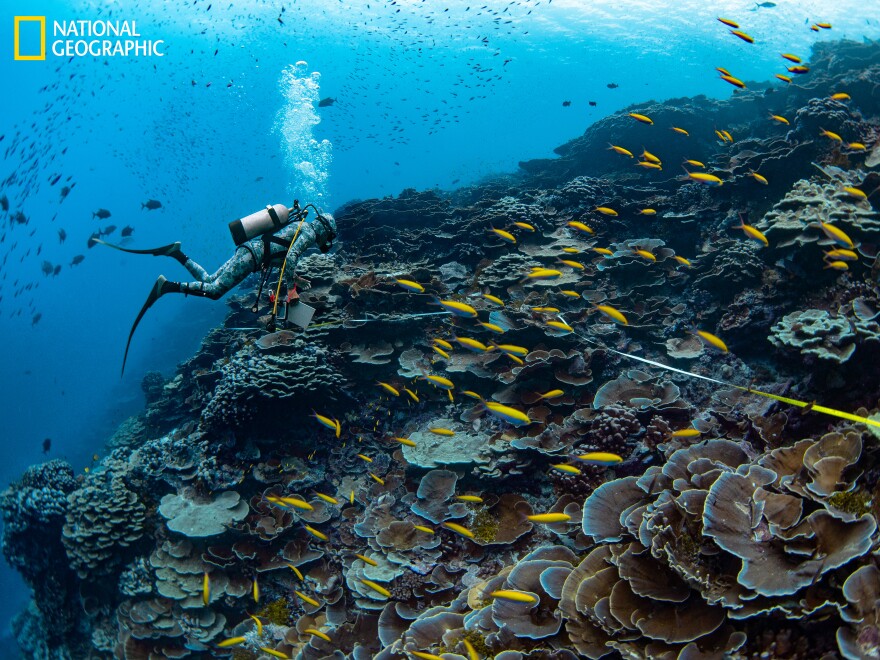Though they may not know it, about half a billion people worldwide depend on the ecosystems created and sustained by corals. And with climate change threatening coral's survival, marine scientist Enric Sala had a goal that might have seemed impossible.
"We wanted to get into a time machine, go back hundreds of years and actually see a coral reef like they used to be everywhere, before we started exploiting them and polluting them and killing them all over the world," Sala said.
The goal was, in essence, made possible during an expedition that Sala led in 2009 with National Geographic Society. The team traveled to a corner of the South Pacific Ocean, to see if the vibrant and virtually untouched reefs there held any clues to bringing damaged reefs in other parts of the ocean back to health.
"The bottom was covered by thriving coral. It was, like, crystal-clear, blue, turquoise water, schools of silver jacks. And then the corals, pastels, oranges and beiges — it was so beautiful. It was like an impressionist painting," Sala said of the first time he saw those thriving reefs.

His team presented their findings to officials in the island country of Kiribati. The Kiribati government took steps to protect the waters from fishing and other human activity, but between 2015 and 2016, record levels of ocean warming decimated half the coral reefs the team had been studying.
After hearing that news, they lost hope for the health of coral reefs, thinking that the increase in temperature meant a certain doom. But, the study continued, and last year, they went in for another dive. Sala, dreading what he was about to find, jumped in with no gear.
"I look down, and my first thought is, did anything ever happen to this reef?"

Despite the reported conditions, the reef had somehow restored itself, filled with life and color once more. Sala and his team were elated. This resurrection is something that Sala says can be traced to two key factors.
The first is, thankfully, half of the corals had not died, as was previously thought. Despite the rise in temperatures, there were enough surviving corals left behind to help reproduce and replenish the reefs.
The second factor was the Kiribati government's decision to fully protect those waters.
"It has an abundance of fish that is off the charts. So they were eating all the algae that would smother the dead coral skeletons, and make it impossible for the corals to come back, which is what happens in other places like the Caribbean," Sala explained.

Protecting oceans from overfishing, Sala added, allows the ecosystem itself to become more resilient. In highly protected areas, the populations of fish grow so much that they spill over the boundaries of their areas and help replenish surrounding fishing grounds, in addition to allowing the ocean to capture and store more carbon to mitigate climate change.
"So if countries want a future for the fisheries, they need to manage their fisheries in a more responsible way around areas that are set aside to help regenerate the rest of the ocean," Sala said.
For him and his team, the rebirth of the coral reef in Kiribati is a beacon of hope among so much pessimism surrounding the future of reefs.
"It's great to show that protection of biodiversity, protection of marine life can actually provide resilience to global warming," he said.
For more on this story, visit National Geographic.
Copyright 2022 NPR. To see more, visit https://www.npr.org.






